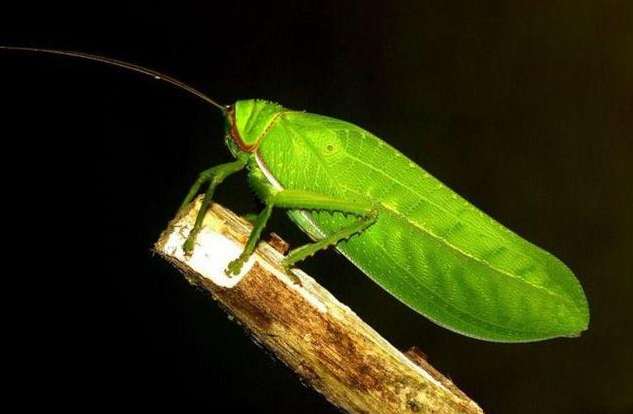The giant katydid is a unique insect that is widely considered a "living fossil" due to its close resemblance to some locusts in the fossil record. This insect is relatively large, usually 6-7 cm long, with brown or gray wings and body, and long antennae.

The giant katydid is a nocturnal insect. Likes to fly at night. They belong to the family Acrididae and are mainly distributed in tropical and subtropical areas of Asia and Africa, including countries such as China, India, Myanmar, Vietnam, the Philippines, Malaysia and Indonesia.
This insect is herbivorous and feeds mainly on trees and shrubs, but also some herbs. They usually feed at night and rest in trees or grass during the day. Their eggs, larvae, and adults all have strong protective colors that blend well into their surroundings and are difficult to detect.
The population of the giant katydids is very limited and getting smaller and smaller because their habitats have been damaged and polluted. To protect this insect, we should take measures to protect their habitat and ecological environment.
First of all, we should reduce the damage to forests and grasslands and prevent deforestation and overgrazing. At the same time, reducing environmental pollution, especially chemical pollution and light pollution, can also protect the living environment of giant leaf weta and other organisms.
Secondly, we can actively carry out science popularization to let more people understand and pay attention to the importance of giant leaf weta and biodiversity conservation. Schools, museums, parks and other places can hold relevant exhibitions and lectures to guide the public to understand the ecological characteristics, distribution and protection status of this insect, and improve environmental awareness.
Finally, we can also take concrete actions to protect the giant katydids. For example, some plants can be planted on campus and in the community to provide an environment suitable for their growth and reproduction. In addition, special wild reserves can also be established to protect the living environment of the giant leaf weta, strengthen scientific research and monitoring, understand its population size and distribution, and take effective measures for protection in a timely manner.

In short, the giant katydids are a very important ecological resource, and protecting them is of great significance to maintaining ecological balance and protecting the ecological environment. Each of us should take action, actively participate in conservation work, and jointly protect our earth home.